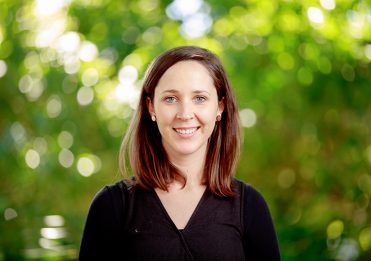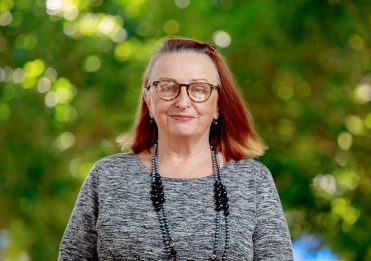Head of Mackay House, Ms Ruth Jans
Originally published in 2012
Throughout history, curiosity has not always enjoyed its current status as a valued quality. Although Aristotle attributed it as one of the most important characteristics of humanity, writing that ‘All men by nature desire to know’ (Ross, 2012), throughout the Medieval era, a sense of suspicion prevailed about this concept. It was considered by many that curiosity was a sign of ignorance or of an unhealthy fascination with inappropriate knowledge, and therefore a sin. It wasn’t until the late seventeenth and early eighteenth centuries that philosophers began to view curiosity as ‘associated with acquisitiveness, an insatiable but laudable desire for knowledge’ (Brown, 2006, p143) and therefore elevate it out of sin and back into virtue.
‘Curiosity may be defined as a desire to know, to see, or to experience, that motivates exploratory behavior directed towards the acquisition of new information….and (therefore) reward’ (Litman, 2005, p793).
An education at Brisbane Girls Grammar School can never be described as boring, or one which quashes curiosity or creativity. While the curriculum is rigorous, the teachers are inspiring, and at times the pace can feel exhausting, the school environment with its amazing human and material resources is most definitely stimulating. Leaving aside the long list of sporting and musical groups, the vast choice of cultural, academic and interest clubs are designed to create and inspire the curious mind. Opportunities such as the Philosopher’s Café, Art Café, art walks and workshops, Astronomy Club, Libellum society, Athene Club, Antipodeans, international study tours, cultural arts tour to New York, Opti-MINDS, da Vinci Decathlon, and debating, to name a few, provide our community with rich and stimulating experiences. In addition, many of these cafes and clubs also provide parents and teachers with a chance to model curiosity to our girls, presenting them with an example of the benefits of nurturing a curious mind and life-long learning.
The role of curiosity in learning should not be underestimated, as without it learning is simply reactive, somewhat like the ‘sponge’ theory of students waiting to be filled with knowledge and understanding. Learning led by curiosity, however, is proactive, where students actively ‘probe (their) environment, to understand it better, and to anticipate changes’ (Greenberg, 1999). According to Kashdan and Fincham (2004), ‘curiosity accounts for about ten per cent of the variance in achievement and performance outcomes’. Simply put, a curious student will be more motivated to explore and investigate, and will therefore potentially achieve higher results than her less curious peers. Day represents curiosity as a curvilinear graph depicting the various levels of arousal and efficiency in a learner (Day, 1982, p19). Below the optimal level the individual lacks interest and motivation, at its height is the state of curiosity, and beyond is a zone of anxiety ‘resulting in behaviours including defensiveness, disinterest, avoidance and inefficiency’ (Armone, 2012, p1).
The theoretical model of curiosity developed by Litman and Jimerson suggests that curiosity is experienced in two forms: CFD—Curiosity as a Feeling of Deprivation (a gap in one’s knowledge) and CFI— Curiosity as a Feeling of Interest, and that both forms can be rewarding (2005, p799). They propose that ‘curiosity can be aroused when individuals feel as though they are deprived of information and wish to reduce or eliminate their ignorance, as well as when they do not feel particularly deficient of information, but would nevertheless enjoy learning something new.’ What intrigues me the most about the implications of CFD and CFI for the education system is that the associated emotions attributed to CFI are often positive in nature, such as interest and joy, whereas the emotions connected with CFD can be negative, such as tension, frustration and uncertainty. It is also important to note that their research proposes that the learning that occurs as a result of CFD is far more ‘substantive, meaningful and capable of increasing subjective feelings of competence’ than the learning that is inspired from CFI.
The very nature of learning pushes students out of their comfort zones and into learning zones and it is in these learning zones that students can feel frustrated and uncertain—the traits attributed to CFD. Schools, such as BGGS, who continue to ‘lift the bar higher’ thereby creating greater opportunities for excellent scholarship, tend to generate environments which foster CFD. Every time a new unit is started and the students learn about the assessment requirements, they are conscious of what they don’t know and are automatically motivated to fill these gaps through class work, homework, research, study and practice. If students can understand that these negative feelings are a natural part of CFD—a more intense experience of curiosity and one that leads to better scholarship than CFI— then hopefully they will feel empowered and embrace this experience rather than slip into the zone of anxiety, at which point they become less efficient learners.
This is why subjects like Philosophy of Learning are so important in establishing a cognitive awareness in students so that they can recognise the difference between the uncomfortable state of CFD and the angst ridden state of the zone of anxiety. It is equally important that parents are able to distinguish between the two as it can be upsetting to see one’s child experiencing frustration and anxiety as a result of challenging homework or assessment tasks. The key is to determine whether your daughter is experiencing the feelings that are part of CFD which can end up motivating them to develop the necessary knowledge/skills to complete the task. The next step is to reassure them that what they are feeling is normal, and that although they may find things difficult now, they will end up developing competency in this skill or an understanding of the concepts. However, if they have gone beyond the state of curiosity and in their anxiety have lost confidence in their ability to learn and improve, then the student must be encouraged to approach their teacher and Head of House as soon as possible in order to make the most of the opportunities provided by the school for help and support. Reassurance is integral in conversations about these feelings as a sense of confidence has a great impact on how we learn.
Being aware of the often uncomfortable emotions associated with CFD and the difference between this and the zone of anxiety will hopefully be reassuring to our students. As long as they remember that while it might be hard now, and they may worry that they will not ever find it easy, if they persevere and access support from their teachers, in time they will achieve their goal. The rewards they experience as a result of this form of curiosity, will hopefully give them the confidence to embrace future challenges with a resilient and inquisitive mind.
References
Armone, M. P. (n.d.). Fostering Curiosity in Your Students. Education Oasis. Retrieved July/August, 2012, from http://www.educationoasis.com
Brown, D. J. (2006). Descartes and the Passionate Mind [Electronic]. Cambridge: Cambridge University Press.
Fincham, F. D. (2004). Facilitating Curiosity: A Social and Self-Regulatory Perspective for Scientifically Based Interventions. In T. B. Kashdan (Author), Positive Psychology in Practice (pp. 482-503). John Wiley & Sons.
Ferrari, J. (2012, July 23). Failure’s all in the mind: Learn to embrace it. The Australian.
Greenberg, D. (1999). Curiosity, Self-Respect and Learning. Sudval. Retrieved July/August, 2012, from http://www.sudval.org
Hidalgo, P. J. (n.d.). Curiosity based learning and self-education. InTeGrate. Retrieved July/August, 2012, from http://serc.carleton.edu/integrate/workshops/methods2012/essays/hidalgo.html
Leonard, N. H., & Harvey, M. G. (2007). Curiosity, mindfulness and learning style in the acquisition of knowledge by individuals / organisations. Int. Journal: Learning and Intellectual Capital, 4(3), 294-314.
Litman, J. A. (2005). Curiosity and the pleasures of learning: Wanting and liking new information. Cognition and Emotion, 19(6), 793-814.
Perry, B. D. (2000). Curiosity: The Fuel of Development. Scholastic. Retrieved July/August, 2012, from http://teacher.scholastic.com
Ross, W. D. (2012). Aristotle, Metaphysics Book 1 [Ebook]. Adelaide: University of Adelaide.
Read reflective commentary from Head of Mackay House, Ms Ruth Jans, on her article, ‘Not to worry, she may just be experiencing curiosity’.
While Marie Kondo is in the business of helping people determine what ‘sparks joy’, as a teacher, I find I am guided to consider what best ‘sparks curiosity’. Curiosity continues to drive our pursuit of life-long learning, and it remains as one of the School’s guiding principles. However, since writing my original Insights article, I have become increasingly aware of the importance in being able to identify and acknowledge the feelings of discomfort that often accompany the ‘learning zone’ and distinguishing these from medically diagnosed anxiety.
Today, many of us are prompted to question whether adolescents, and indeed society at large, are becoming more anxious, or whether we as a collective are just better at noticing, diagnosing and talking about it. While the Australian Bureau of Statistics indicates that the number of people reporting anxiety-related concerns has increased over the past few years, most medical researchers determine that the statistics are stable. It is somewhat of a relief to read in Scott Stosse’s book, My Age of Anxiety (2014), that, ‘Every generation, going back to Periclean Greece, to second century Rome, to the Enlightenment, to the Georgians and to the Victorians, believed itself to be the most anxious ever.’
The key remains on acknowledging the challenges we feel when we are engaged in CFD and CFI, normalising the discomfort, and equipping our students to both self-reflect and self-regulate. Our Philosophy of Learning subject continues to teach our community about metacognition and up-to-date neuroscience. Over the past five years, Girls Grammar has also embedded Mindfulness into our Ethics Program as a way of nurturing the mental health of our community, and developing our students’ ability to persevere through discomfort. In addition to understanding how our brains work, and in valuing the gift of being mindful, we can also consider how to combat potential anxiety by teaching girls to be brave, not perfect.




